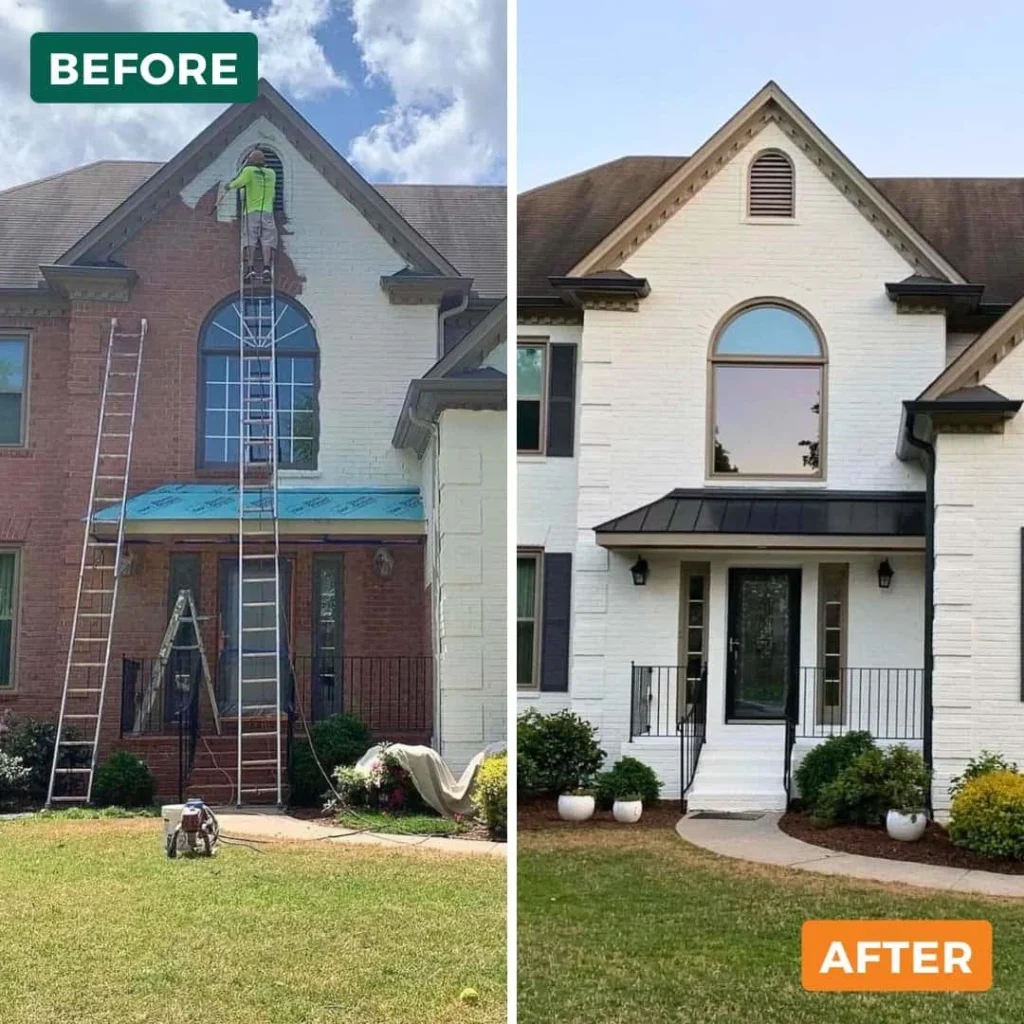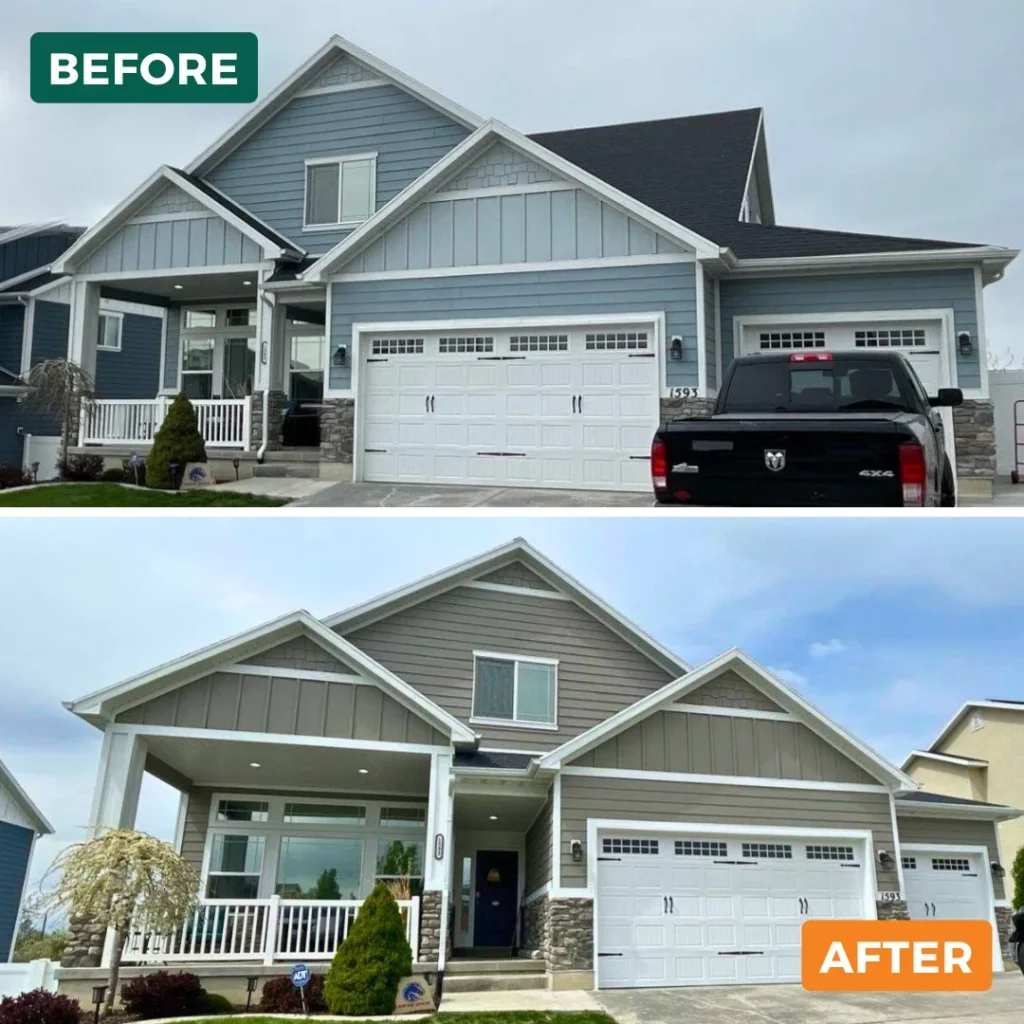Cleaning your home before painting makes a big difference. Dirt, mold, and old paint can cause new paint to peel or fade fast. Pressure washing removes these problems, giving your paint a fresh surface to stick to. Hiring an exterior painter in Pittsburg can help you decide if pressure washing suits your house’s condition. They can also manage the cleaning safely to avoid damage. A clean exterior means your paint job lasts longer and looks sharper. Pressure washing isn’t always needed, but knowing when to do it saves money and effort.
How Pressure Washing Affects Paint Adhesion
Why Clean Surfaces Help Paint Stick Better
Paint bonds best to clean surfaces. Dirt, dust, and grime create a barrier that stops paint from sticking well. When the surface is clean, paint can attach firmly to the material underneath. This leads to a smoother finish and longer-lasting results. Pressure washing removes loose debris, mold, and mildew. This creates a fresh base that allows paint to seal tightly. Without cleaning, paint may peel or bubble quickly. Clean walls also help paint dry evenly, reducing cracks and chips. Proper cleaning before painting saves time and money on future repairs.
Risks of Painting Over Dirt or Mold
Painting over dirt or mold causes problems fast. Dirt prevents paint from adhering, which can lead to peeling or flaking within weeks or months. Mold grows underneath the paint, damaging the surface. It can cause paint to discolor and weaken the material. This creates spots where moisture can get trapped, inviting more mold or rot. Over time, this damages siding or wood. Paint jobs done over unclean surfaces require more repairs and repainting sooner. Taking time to clean first helps avoid these costly and frustrating issues.
Signs Your House Needs Pressure Washing Before Painting
Visible Dirt, Mold, or Mildew on Walls
When dirt, mold, or mildew covers your home’s exterior, pressure washing becomes necessary before painting. These substances create rough patches that prevent paint from sticking well. Mold and mildew can cause paint to fade or peel quickly. Dirt traps moisture, which can damage siding or wood over time. Removing these contaminants helps paint adhere firmly and last longer. Cleaning also improves the overall look of your home. Pressure washing is the most effective way to clear these issues, giving your walls a fresh, smooth surface ready for paint.
Chalking or Peeling Paint
Chalking occurs when old paint breaks down, leaving a powdery residue on surfaces. If you notice white dust on walls or trim, pressure washing can remove it before you repaint. Painting over chalk causes new paint to fail fast. Peeling paint also signals the need for cleaning. Loose paint must be removed to avoid bumps and poor paint adhesion. Pressure washing clears chalk, dirt, and flaking paint, leaving a smooth surface. This step helps the new paint stick evenly and last longer after your paint job.
When Pressure Washing Can Cause Damage
Fragile Surfaces That Need Gentle Cleaning
Some surfaces cannot handle strong pressure washing. Fragile materials like old wood, stucco, or delicate siding may crack or chip if cleaned too roughly. Using high pressure on these can cause dents or holes. In such cases, a softer cleaning method is better. Soft washing or gentle scrubbing removes dirt without harming the surface. It is important to know what material your home is made of before choosing pressure washing. Cleaning the wrong way can cause damage that costs more to fix than the paint job itself.
Incorrect Pressure Settings and Their Impact
Using the wrong pressure settings during washing can harm your home’s exterior. Too much pressure can strip paint, damage wood fibers, or break siding panels. Too little pressure might leave dirt and mold behind, reducing paint adhesion. It is important to adjust the pressure based on the surface type. Different materials need different care to avoid damage. A controlled approach removes grime safely and prepares the surface well. Incorrect pressure settings often cause repairs and delays in painting projects, leading to higher costs and frustration.
Best Practices for Pressure Washing Before Painting
How to Choose the Right Pressure Washer Settings
Choosing the right pressure washer settings is key to cleaning well without damage. Different surfaces require different pressures. Soft surfaces like wood or vinyl need lower pressure to avoid dents or cracks. Hard surfaces such as brick or concrete can handle stronger settings. Water temperature and nozzle type also affect cleaning power. Test a small area first to check for damage. Adjust pressure as needed to remove dirt and mold without harming the surface. Using the correct settings prepares your home for paint and protects your walls.
Safety Tips During Pressure Washing
Safety matters during pressure washing to protect yourself and your home. Always wear goggles and gloves to keep water and debris away from your eyes and skin. Avoid pointing the nozzle at windows or fragile areas to prevent breakage. Keep a firm grip on the wand because pressure can cause recoil. Stay clear of electrical outlets and wiring. Use a stable ladder if working on higher surfaces. Taking these steps reduces the risk of injury and property damage while making sure your cleaning goes smoothly.
Alternatives to Pressure Washing for Exterior Cleaning
Using Soft Washing Methods
Soft washing uses low pressure and special cleaning solutions to remove dirt, mold, and mildew safely. This method works well on fragile surfaces like wood, stucco, and vinyl siding. The cleaning solutions break down grime without the risk of damage that high pressure can cause. Soft washing cleans deeply and helps prevent mold growth for a longer time. It also uses less water than pressure washing. This approach is gentle yet effective, making it a smart choice for preparing surfaces that cannot handle strong water pressure before painting.
Hand Scrubbing and Cleaning Solutions
Hand scrubbing is a simple but effective way to clean small or delicate areas. Using brushes and mild cleaning solutions, you can remove dirt, mold, and mildew without risking damage. This method works well on textured surfaces or spots that pressure washing cannot reach. It requires more effort but gives precise control over cleaning. Hand scrubbing is often used for trim, windows, or areas with chipped paint. Combining it with cleaning solutions helps loosen stubborn grime and prepares the surface for better paint adhesion.
Trust Dino Painting to Handle Your Pressure Washing Right
Proper cleaning methods before painting can protect your home’s surfaces and extend the life of your paint. Using the right tools and techniques avoids damage to siding or trim during preparation. Dino Painting carefully evaluates each house to select the best cleaning approach, balancing power and safety. A well-prepared surface means fewer repairs and a smoother finish. Our team is ready to help you get lasting results with professional care. Call us at 724-260-6074 or visit us at 3639 Poplar Ave Rear, Pittsburgh, Pennsylvania 15234, for trusted service.


